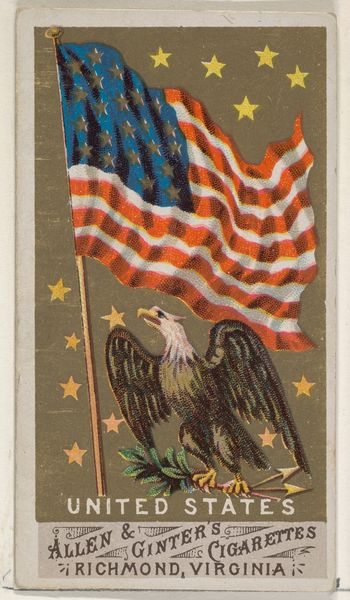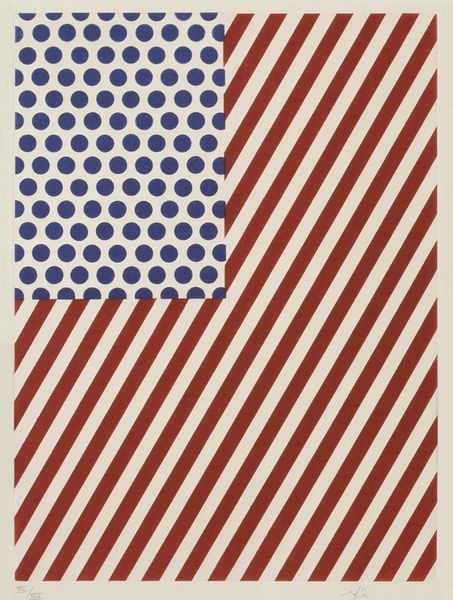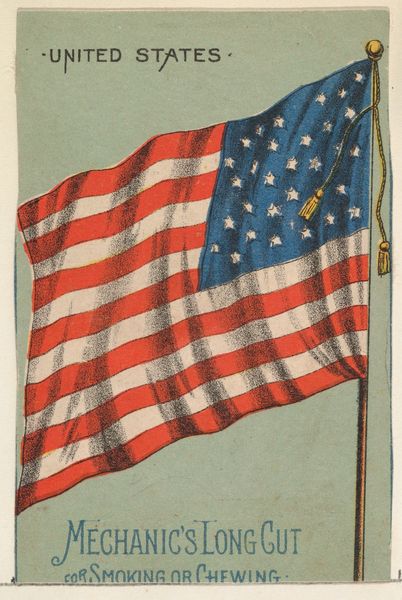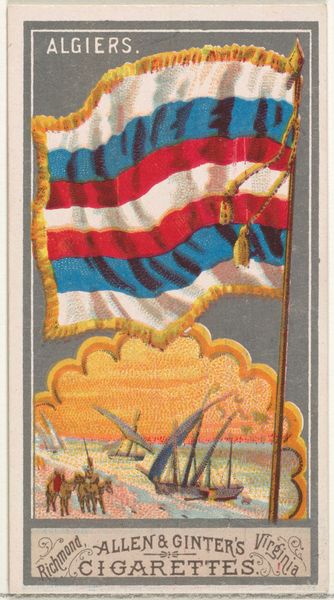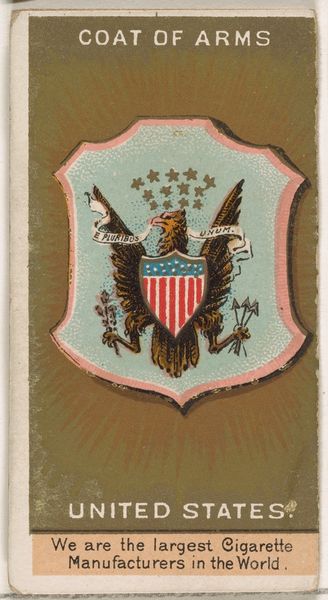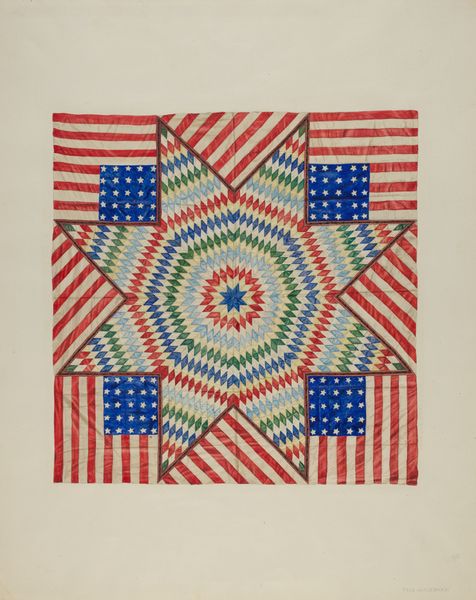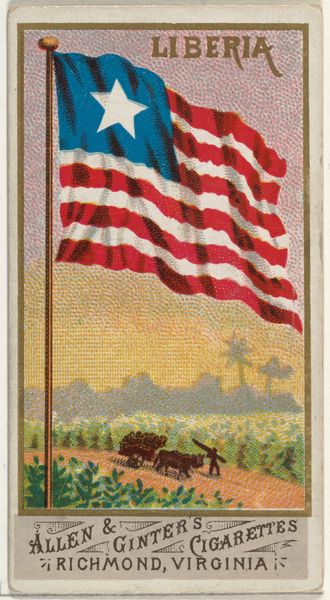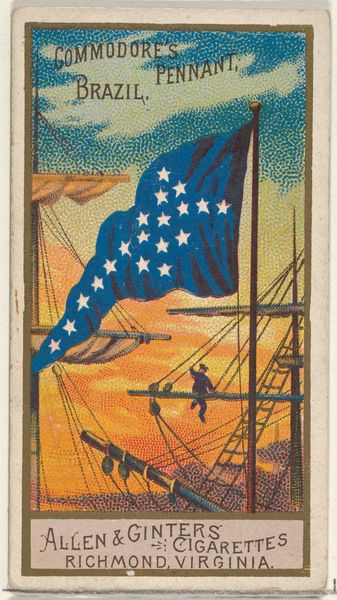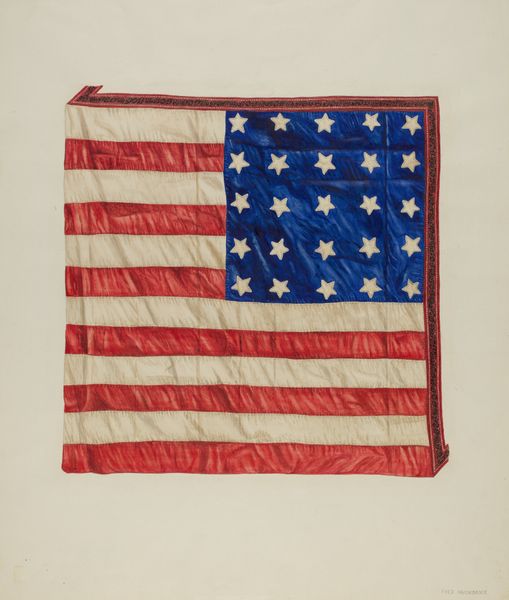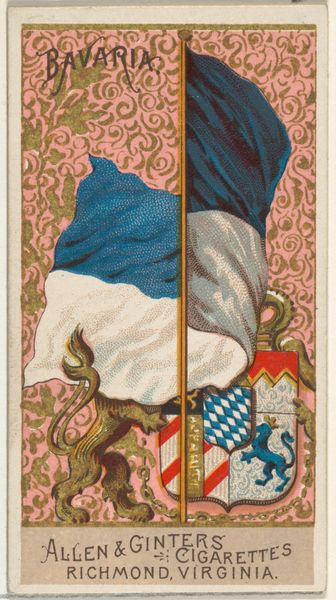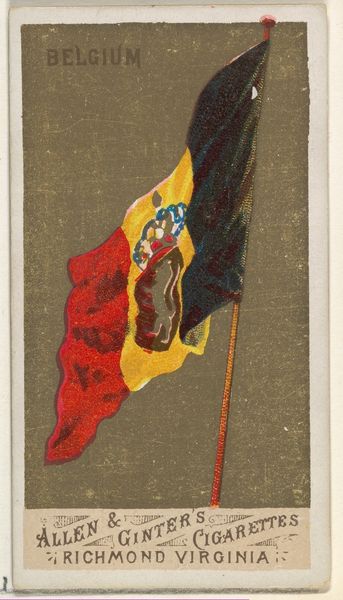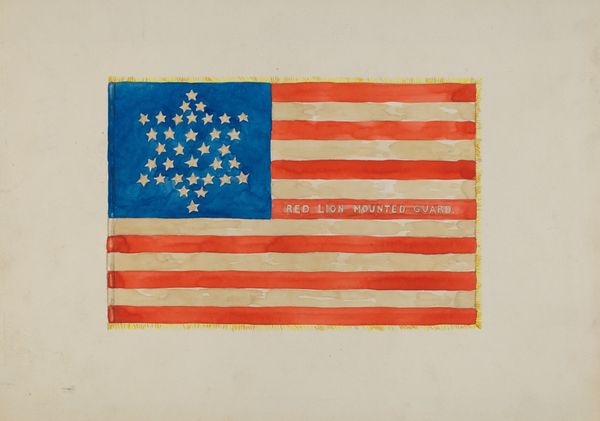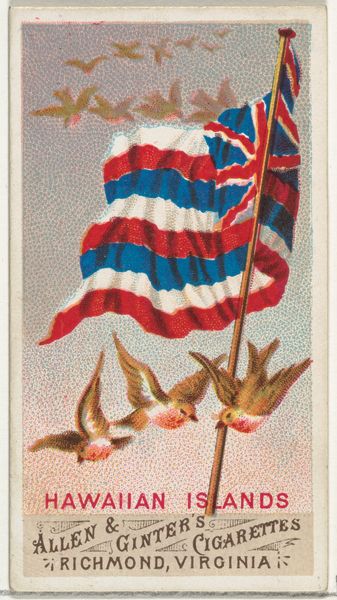
Pennant U.S., United States Jack, from Flags of All Nations, Series 1 (N9) for Allen & Ginter Cigarettes Brands 1887
0:00
0:00
drawing, graphic-art, lithograph, print
#
drawing
#
graphic-art
#
lithograph
# print
#
symbolism
Dimensions: Sheet: 2 3/4 x 1 1/2 in. (7 x 3.8 cm)
Copyright: Public Domain
Editor: So, here we have an 1887 lithograph called "Pennant U.S., United States Jack," part of a series of "Flags of All Nations" produced by Allen & Ginter for cigarette cards. I’m struck by how this commercial item transforms the American flag into a collectible. What are your thoughts when looking at it? Curator: Well, the immediate thing I see is a collision of industry, labor, and national symbolism. This wasn’t high art, it was mass-produced. Lithography allowed for rapid dissemination, turning patriotism into a consumable item. The image becomes less about national pride and more about marketing cigarettes. Editor: That’s interesting. So, you’re focusing on the context of production. Does the symbolism of the flag change when it becomes a commercial tool? Curator: Precisely. Flags typically signify national identity, unity. But here, it signifies consumerism and capitalist expansion. Allen & Ginter were essentially selling dreams of aspiration alongside their tobacco, commodifying national identity in the process. Editor: So the materiality of the print, being a mass-produced object distributed with cigarettes, fundamentally alters its meaning? It's no longer purely patriotic, but inherently tied to industry and marketing? Curator: Absolutely. Consider the workers involved – from the lithographers producing the prints to the factory workers assembling the cigarette packs. The piece connects to wider questions about labor and the mechanisms through which national symbols were made commonplace, intertwined with everyday habits of consumption. What was initially propaganda morphs to promotion; these prints actively recruited subjects of commercial value rather than recruiting soldiers for the field. Editor: I see it now. Thinking about it this way opens up new interpretations of everyday objects. I had initially viewed it just as historical ephemera, but now I see a complex network of production and cultural meaning embedded within. Curator: Exactly, looking at art through its materials and means of production provides critical insights beyond surface appearances. It reveals underlying power structures, like marketing techniques or labor relationships, inherent to capitalism, consumption, and production.
Comments
No comments
Be the first to comment and join the conversation on the ultimate creative platform.

